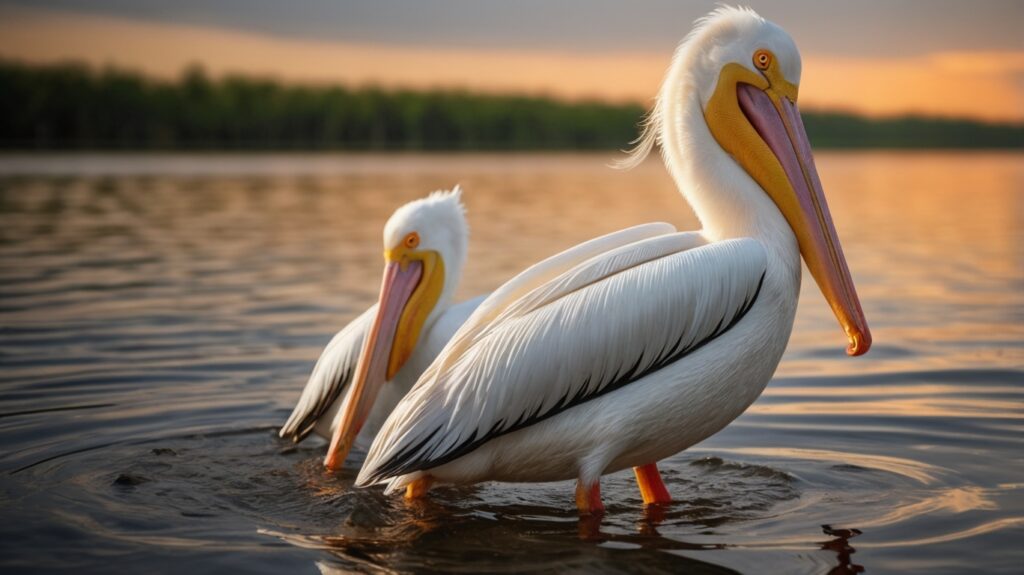Table of Contents
- Introduction
- Physical Characteristics
- Breeding Season & the Nuptial Tubercle
- Feeding Habits & Bill Adaptations
- Conclusion
- FAQs
Introduction
The American White Pelican (Pelecanus erythrorhynchos) is a striking bird known for its snowy-white plumage, black wingtips, and massive orange bill. What makes this species particularly fascinating is the temporary nuptial tubercle—a horn-like structure that appears during breeding season. This article explores the pelican’s unique features, breeding behaviors, and feeding adaptations.

Physical Characteristics
The American White Pelican is predominantly white with contrasting black flight feathers. Its most distinctive feature is its large, bright orange bill, which can hold up to 11 liters of water. Unlike the Brown Pelican, this species does not dive for food but instead scoops prey while swimming.
Breeding Season & the Nuptial Tubercle
During breeding season, the pelican undergoes a remarkable transformation. A flat, horn-like nuptial tubercle grows on the upper mandible, signaling readiness to mate. This temporary structure plays a role in courtship displays and falls off once the season ends.
Key Breeding Traits:
- Nuptial tubercle appears only in spring.
- Used for courtship signaling.
- Bright orange bill becomes more prominent.
Feeding Habits & Bill Adaptations
The American White Pelican is a cooperative feeder, often hunting in groups to herd fish into shallow waters. Its expandable bill pouch can hold large volumes of water, allowing it to filter out fish efficiently.
Unique Feeding Adaptations:
- Bill capacity: Up to 11 liters of water.
- Group hunting strategy increases success.
- Does not dive; instead, it scoops prey while swimming.
Conclusion
The American White Pelican is a captivating bird, especially during breeding season when its nuptial tubercle appears. With its impressive bill adaptations and cooperative feeding behaviors, this species stands out among North American waterbirds.
FAQs
1. What is a nuptial tubercle?
A temporary horn-like growth on the pelican’s bill during breeding season, used for courtship.
2. How much water can an American White Pelican’s bill hold?
Up to 11 liters, allowing it to filter fish efficiently.
3. Do American White Pelicans dive for food?
No, they scoop prey while swimming, unlike Brown Pelicans, which dive.
4. When does the nuptial tubercle disappear?
After breeding season ends, the tubercle falls off.
5. Where can you find American White Pelicans?
They inhabit freshwater lakes, marshes, and coastal regions across North America.
